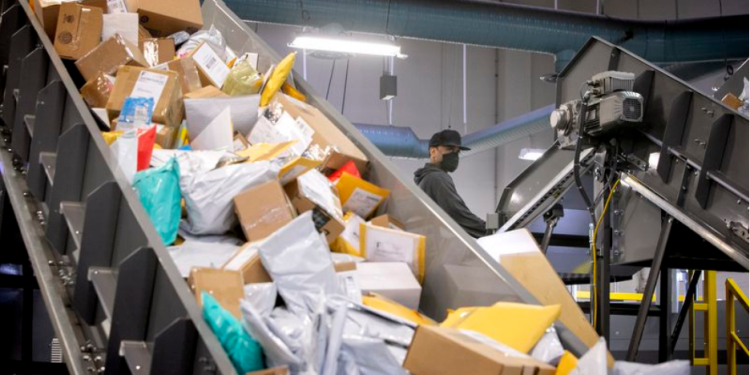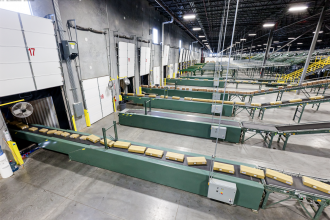Where do conveyors go from here?

The ecommerce world was already in growth mode when the pandemic hit, then it exploded. Material handling equipment—conveyors especially—need to process orders at unprecedented volumes, and there’s no sign of that slowing down. Conveyors will be overloaded, motors and gear boxes will be pushed to their limits, bearings will be neglected and abused 24/7. For all these reasons, there is an industry need to evolve and implement predictive and prescriptive analytics.
Conveyors have come a long way since their origins over two centuries ago. Original conveyor belts were constructed of leather or canvas moving over solid wooden beds. Technology has moved forward using today’s improved, modern materials. These advancements were largely driven by World War II and the scarcity of natural materials, like rubber and cotton. The result is what is known as a light-duty synthetic conveyor belt. While efficient and light years beyond the earlier generations of belts, the light-duty models may need a new look in the era of rapid-fire ecommerce operations.
The many components needed to keep conveyors moving are under high levels of stress. From gear boxes to belts and bearings, today’s operations are stretching their capabilities to the engineered limit. Thankfully, most of these components can be managed successfully with condition-based monitoring programs, which get ahead of failure and alert end users to approaching trouble.
While condition monitoring programs are necessary for reliability; an un-monitored single-point of failure can sideline an entire operation. Failure in large facilities with miles and miles of belted conveyance in place is especially crippling. Customer order delays, wasted labor, and high parts cost are all inefficiencies that are no longer acceptable. This leaves the conveyor industry in a challenging situation.
At the center of it all is the fact that the cost of growth has driven lighter-duty component use. Options to add a heavy-duty belt to a lighter-weight conveyor would put too much stress on these components. On the other hand, a light-weight belt is subject to failure under the new volumes they’re required to transport.
The industry is working to address these challenges and companies are beginning to put their collective heads together to address these issues using predictive and prescriptive analytics. It’s early in the process, but the innovation wheels are beginning to turn leveraging condition monitoring.
In play is the opportunity for newer, yet-to-be-designed belt materials, perhaps lighter and more durable than today’s options. With most current belt patents being expired, there will likely be huge advancement needed to secure market share.
Eventually, the industry will reach a point where conditioning monitoring provides predictive versus preventative maintenance. This will lead to increased life for components and resulting savings. In the meantime, ecommerce technicians will depend on today’s condition monitoring tools, light-weight belts, and the right approach to using both. The conveyor industry has demonstrated its ability to change, and as operations demand it, there’s no question that evolution will continue.
The MHI Solutions Community has created a Condition Monitoring and Reliability Committee to explore new technologies and provide thought leadership for the industry to keep their operations running. To learn more or get involved please reach out to Christian Dow at cdow@mhi.org.



